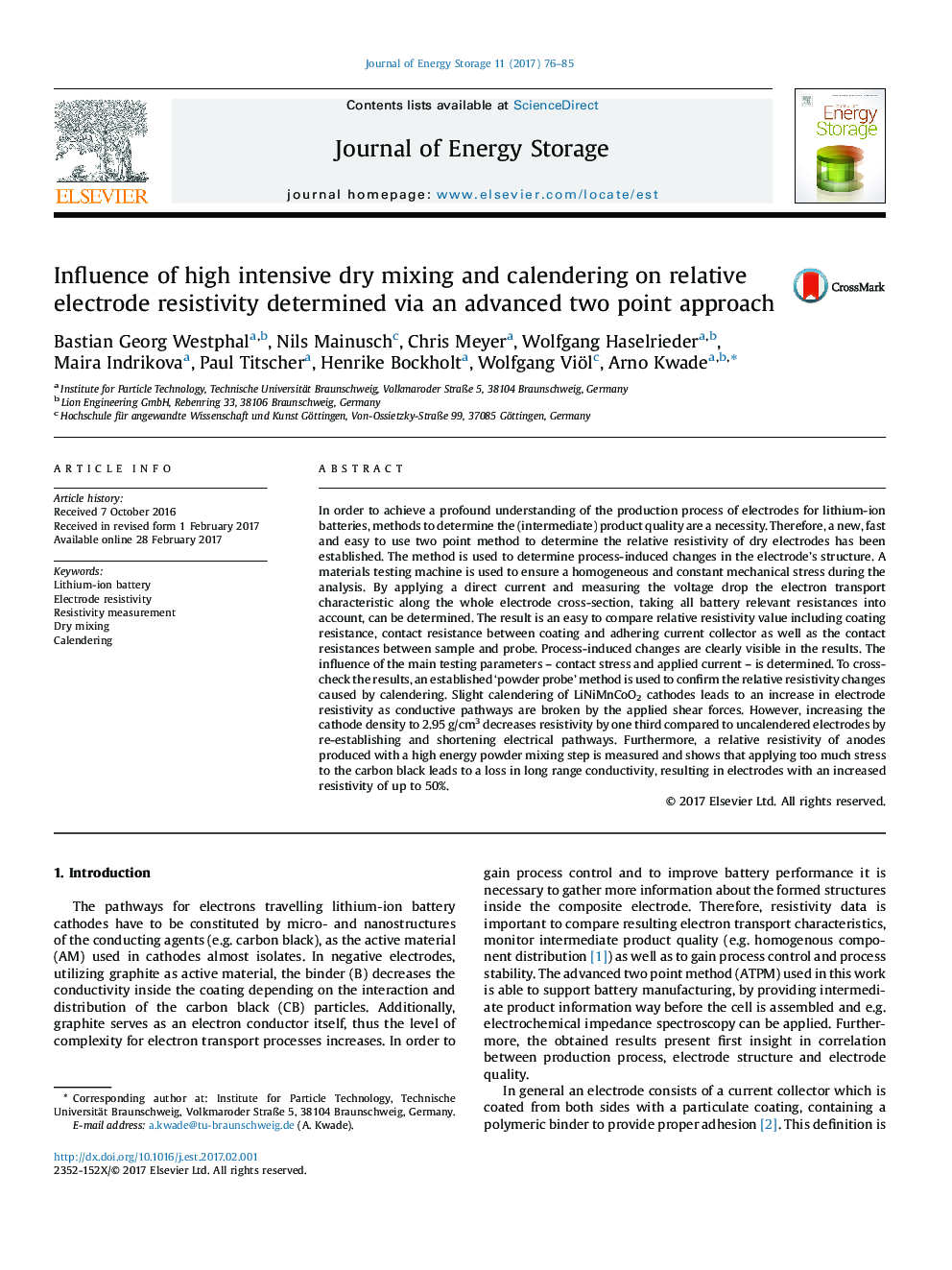| Article ID | Journal | Published Year | Pages | File Type |
|---|---|---|---|---|
| 5127266 | Journal of Energy Storage | 2017 | 10 Pages |
â¢New relative resistivity measurement for lithium-ion battery electrodes established.â¢Calendering of LiNiMnCoO2 leads to a resistivity increase, passing a maximum.â¢Excessive powder mixing hinders long range electric network, increasing resistivity.
In order to achieve a profound understanding of the production process of electrodes for lithium-ion batteries, methods to determine the (intermediate) product quality are a necessity. Therefore, a new, fast and easy to use two point method to determine the relative resistivity of dry electrodes has been established. The method is used to determine process-induced changes in the electrode's structure. A materials testing machine is used to ensure a homogeneous and constant mechanical stress during the analysis. By applying a direct current and measuring the voltage drop the electron transport characteristic along the whole electrode cross-section, taking all battery relevant resistances into account, can be determined. The result is an easy to compare relative resistivity value including coating resistance, contact resistance between coating and adhering current collector as well as the contact resistances between sample and probe. Process-induced changes are clearly visible in the results. The influence of the main testing parameters - contact stress and applied current - is determined. To cross-check the results, an established 'powder probe' method is used to confirm the relative resistivity changes caused by calendering. Slight calendering of LiNiMnCoO2 cathodes leads to an increase in electrode resistivity as conductive pathways are broken by the applied shear forces. However, increasing the cathode density to 2.95Â g/cm3 decreases resistivity by one third compared to uncalendered electrodes by re-establishing and shortening electrical pathways. Furthermore, a relative resistivity of anodes produced with a high energy powder mixing step is measured and shows that applying too much stress to the carbon black leads to a loss in long range conductivity, resulting in electrodes with an increased resistivity of up to 50%.
